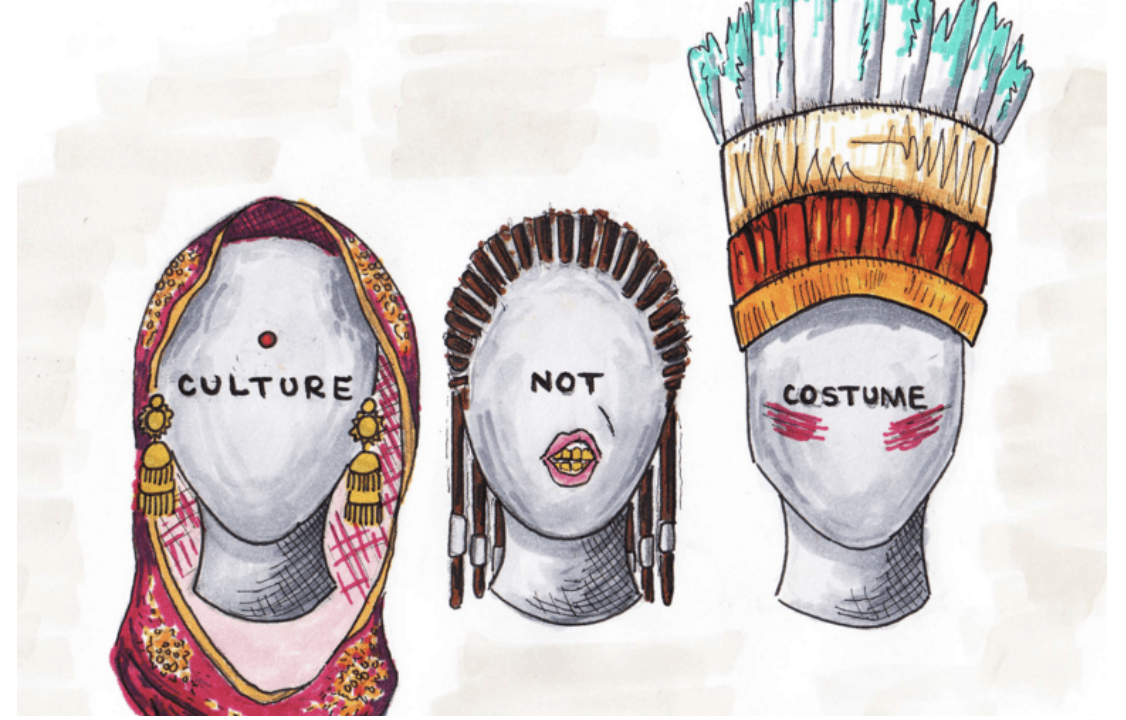[Op-Ed] Your Yearly Halloween Reminder
Here we go again. Happy almost Halloween to everyone who celebrates!
MORE IN THIS SECTION
Here we go again. Happy almost Halloween to everyone who celebrates! It’s that time of year when most people dress up, little kids accept candy from strangers, and people need to be reminded that cultural and religious practices are not costumes. That’s right—this is your yearly reminder that cultural appropriation is not OK, especially during Halloween.
Since 2020, I have researched cultural appropriation to create cultural competency seminars and courses. In my work, I have found that cultural appropriation occurs when elements from a group’s culture or religious practices—particularly those from marginalized backgrounds—are used by others for their benefit. Often, appropriation occurs between a dominant group (white people) and a minority group (BIPOC communities). However, it is not exclusive to this power dynamic; appropriation can occur between any members of opposing cultures. If an individual is benefiting from or profiting off a culture that is not theirs, it is cultural appropriation. It’s as simple as that.
Cultural appropriation is a result of prejudice and stereotypes. These concepts rely on spreading misinformation and bias about BIPOC, further marginalizing them from the majority. During Halloween, appropriation is evident in costumes featuring Native American attire, “Geisha” costumes, Day of the Dead attire, “Gypsy” costumes, Blackface, “Hula” costumes, and “Arab” or “Sheikh” costumes (the list goes on). The act of taking attire from BIPOC communities and mass-producing it for a holiday centered around dressing up for fun implies that BIPOC cultures are something to be trivialized. The three main goals of Halloween are to look good, look scary, or look funny—not to educate or uplift BIPOC experiences. So why would anyone dress up in cultural attire? Dressing in cultural attire for this holiday undermines the historical abuse and displacement that BIPOC communities have faced. To add insult to injury, these costumes are often exaggerated, sexualized, or inaccurate, reinforcing harmful biases.

Source: The Bizz USA
RELATED CONTENT
An outcome of cultural appropriation is that a dominant group benefits by harming a minority group. In this case, the dominant group consists of corporations, while the minority group is made up of BIPOC communities. According to the National Retail Federation, the Halloween market generated a record $12.2 billion in the United States in 2023. The most significant increase in spending came from the costume category, which is directly tied to companies exploiting elements of BIPOC culture to use as props. Over the years, costume stores like Spirit Halloween and Party City have stopped selling costumes associated with appropriation or have at least rebranded the pieces needed to create them. Yet, culturally appropriated costumes remain prevalent on popular fast fashion sites.
Cultural appropriation happens all the time, not just on Halloween. We see this with major fashion brands copying cultural garments, people wearing hairstyles they shouldn’t, and the gentrification of cultural food. Occasionally, people believe these instances of appropriation are moments of cultural appreciation, but that is not the case. Cultural appreciation is centered on educating oneself while uplifting members of that culture. One can respectfully engage with culture by educating themselves about the history behind attire, practices, and religious objects. This does not mean you are allowed to use or wear these elements as a costume or at all.
If you’re wondering how to educate yourself about a culture and be respectful, let me tell you about the internet. It is a free tool that can connect you to all the resources you need to learn how to appreciate culture instead of appropriating it. If all else fails, just stick to what you know (your culture). And maybe dress up as a vampire for Halloween.





LEAVE A COMMENT:
Join the discussion! Leave a comment.